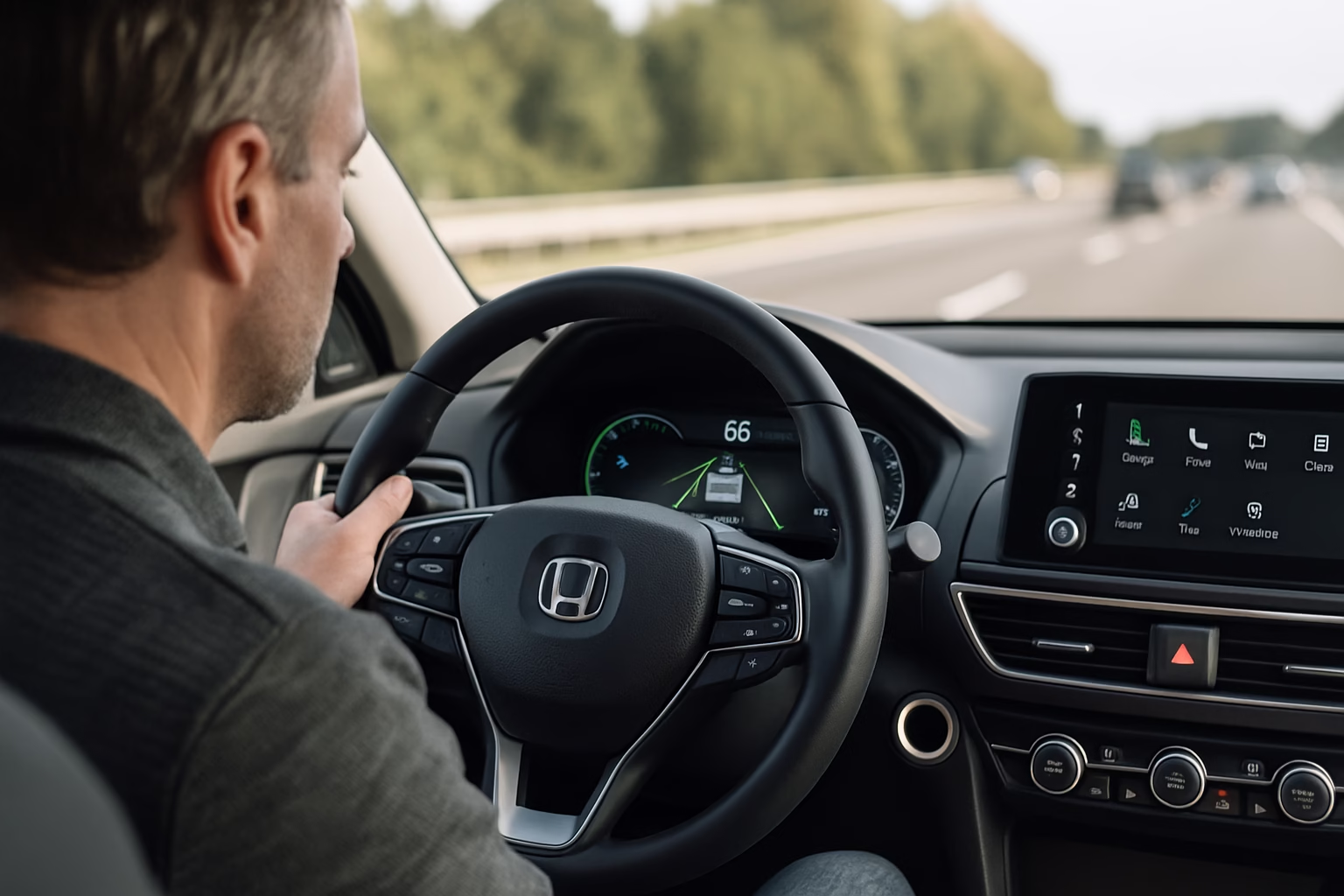Modern vehicles come loaded with advanced driver assistance systems, or ADAS. These features use sensors and software to help you stay safe by monitoring the road, adjusting your speed and steering when necessary. The technology is evolving quickly and, with it, a sea of acronyms. Car manuals and automotive websites love abbreviations that can make it feel like you need a glossary just to understand what your car can do. This guide decodes the most common ADAS acronyms you’ll see in brochures, dashboards and safety ratings. We explain what each does, why it’s useful and how to use it properly.
Why so many acronyms?
Vehicle manufacturers, safety agencies and technology suppliers all use their own terms to describe similar features. Some names are marketing catchphrases and others are technical terms. The important thing is not memorising the alphabet soup but understanding the function behind it. By learning a few key acronyms, you can make sense of your owner’s manual, compare models and get the most out of your safety tech.
ACC (Adaptive Cruise Control)
Adaptive cruise control goes a step beyond the traditional cruise control many drivers know. Instead of just holding a constant speed, ACC uses radar or cameras to maintain a set distance from the vehicle ahead. If traffic slows, the system reduces your speed to keep a safe following gap. When the lane clears, it returns you to the speed you selected. ACC reduces fatigue on long drives and helps with stop-and-go traffic. Remember that it’s a driver aid, not an autopilot. You still need to steer and be ready to brake, especially on winding roads or in heavy rain where sensors can struggle.
AEB (Autonomous Emergency Braking or Automatic Emergency Braking)
Autonomous emergency braking is designed to prevent or reduce the severity of a frontal collision. Cameras or radar monitor the road ahead. If the system detects that you’re closing on a vehicle or obstacle too quickly and you haven’t reacted, it will warn you and then apply the brakes. Some systems can bring the car to a complete stop, while others aim to slow you down enough to avoid or lessen the impact. Always pay attention to alerts and keep your hands and feet ready; AEB is an extra safety layer, not a replacement for attentive driving.
LKA (Lane Keeping Assist) and LDW (Lane Departure Warning)
Lane-related acronyms often cause confusion. Lane Departure Warning alerts you if you drift out of your lane without indicating. Cameras read the lane markings and, if you start to cross them, you might hear a beep or feel the steering wheel vibrate. Lane Keeping Assist goes further by gently steering you back towards the centre. Some systems provide only a light tug while others can keep you centred even on curves. These features work best on clearly marked roads and during good weather. They can struggle with faded lines, road works or snow, so you must continue to steer.
BSM (Blind Spot Monitoring) and RCTA (Rear Cross Traffic Alert)
Blind Spot Monitoring uses sensors on the sides or rear of your vehicle to detect traffic in adjacent lanes that might not appear in your mirrors. A light on the side mirror or pillar warns you when a car is in your blind spot. Rear Cross Traffic Alert does something similar when you reverse out of a driveway or parking space. It warns you if vehicles or pedestrians are approaching from the sides. These features reduce the risk of side-swipe accidents and back-over incidents. Even so, you should always check manually before changing lanes or backing out; sensors can miss small objects or fast-approaching motorcycles.
FCW (Forward Collision Warning)
Forward Collision Warning is often paired with AEB but can exist on its own. It uses cameras or radar to monitor the traffic ahead and warns you if you are closing in too quickly. The system might sound an alarm or flash a light on the dashboard. It provides a few seconds to react by braking or swerving. FCW doesn’t take control of the car; it relies on you to take action. Consider it an extra set of eyes that helps you maintain a safe following distance.
HBA (High Beam Assist) and AHB (Automatic High Beams)
Drivers sometimes forget to switch their high beams on and off when approaching other vehicles. High Beam Assist automates the process. A camera monitors the road for headlights or taillights. When the road ahead is clear, the system turns on the high beams for better visibility. It dims them as soon as it senses approaching traffic or street lights. This feature improves nighttime visibility while reducing glare for others. Note that it may not recognise all road users, especially cyclists or pedestrians without reflective gear, so you should still be mindful of your lighting.
TPMS (Tyre Pressure Monitoring System)
Tyre pressure may not seem like advanced driver assistance, but keeping the correct pressure is critical for safety, fuel economy and tyre life. A Tyre Pressure Monitoring System uses sensors inside the wheels or on the valve stems to measure air pressure. If pressure drops below the recommended level, a warning light appears on your dashboard. Some systems show the actual pressure for each tyre. When you see a TPMS warning, check your tyres as soon as possible. A slow leak could lead to a blowout or poor handling. Remember to reset the system after inflating or changing tyres according to the instructions in your manual.
TJA (Traffic Jam Assist)
Traffic Jam Assist combines adaptive cruise control and lane keeping assist at low speeds. In heavy traffic, it can follow the car ahead and keep you centred in your lane, reducing the stress of stop-and-go driving. These systems work best on highways with clear lane markings. They often require you to keep your hands on the wheel; some monitor your attention using a steering wheel sensor or camera. If you remove your hands for too long or glance away, the system will prompt you to take over. Because traffic can be unpredictable, you should always be ready to brake or steer.
Parking aids: PSA (Parking Steering Assist) and APA (Automatic Parking Assist)
Modern cars can help with parking in tight spots. Parking Steering Assist offers guidance by showing lines on the camera display or giving you audible cues about how much to turn the wheel. Automatic Parking Assist takes control of the steering and sometimes the gears and brakes to manoeuvre into a space. These systems rely on sensors to measure the space and calculate the necessary turns. They work best in well-marked, open spaces. Always supervise closely and be ready to stop if an obstacle appears. Parking aids can be thrown off by low kerbs, uneven surfaces or unexpected pedestrians.
Understanding the limitations
While acronyms can make ADAS sound complicated, each feature has a straightforward purpose: to support you. The key is understanding where the technology helps and where it doesn’t. Sensors can be blinded by dirt, snow, heavy rain or direct sunlight. Cameras may struggle with faded lane markings or unusual road layouts. Radar can be blocked by metal objects or aftermarket bull bars. Even with perfect conditions, these systems are designed as assistance only. You remain responsible for steering, braking and observing the road.
How to get the most from your ADAS
- Read the manual. Your owner’s manual explains how each feature operates in your specific vehicle. It will tell you how to activate, adjust or temporarily disable the system. Keep the manual handy for quick reference.
- Understand alerts. Pay attention to dashboard icons, sounds and vibrations. Learn what they mean so you can respond appropriately instead of ignoring or being startled by them.
- Keep sensors clean. Cameras and radar modules need a clear view. Wash windshields, bumpers and mirrors regularly. Clear snow or mud from sensors before driving.
- Stay engaged. Even the most advanced ADAS can make mistakes. Keep your hands on the wheel and eyes on the road. Use the technology as a helpful assistant, not a substitute for attentive driving.
- Know how to turn features off. There may be situations where an assistance feature interferes. For example, lane keeping may fight you on a narrow country road. Learn how to disable or adjust the system safely without panic.
By understanding what common ADAS acronyms mean and how the associated features work, you can take full advantage of your vehicle’s safety technology. Rather than memorising every term, focus on what each system does and its limitations. With a little knowledge, those confusing letters become a valuable safety toolkit that helps you drive more confidently and comfortably.

Hiran Alwis is an automotive lecturer and ADAS specialist with over 15 years of experience in diagnostics, advanced safety systems, and technical training. He founded ADAS Project to help everyday drivers and workshop technicians understand and safely use advanced driver assistance systems.
